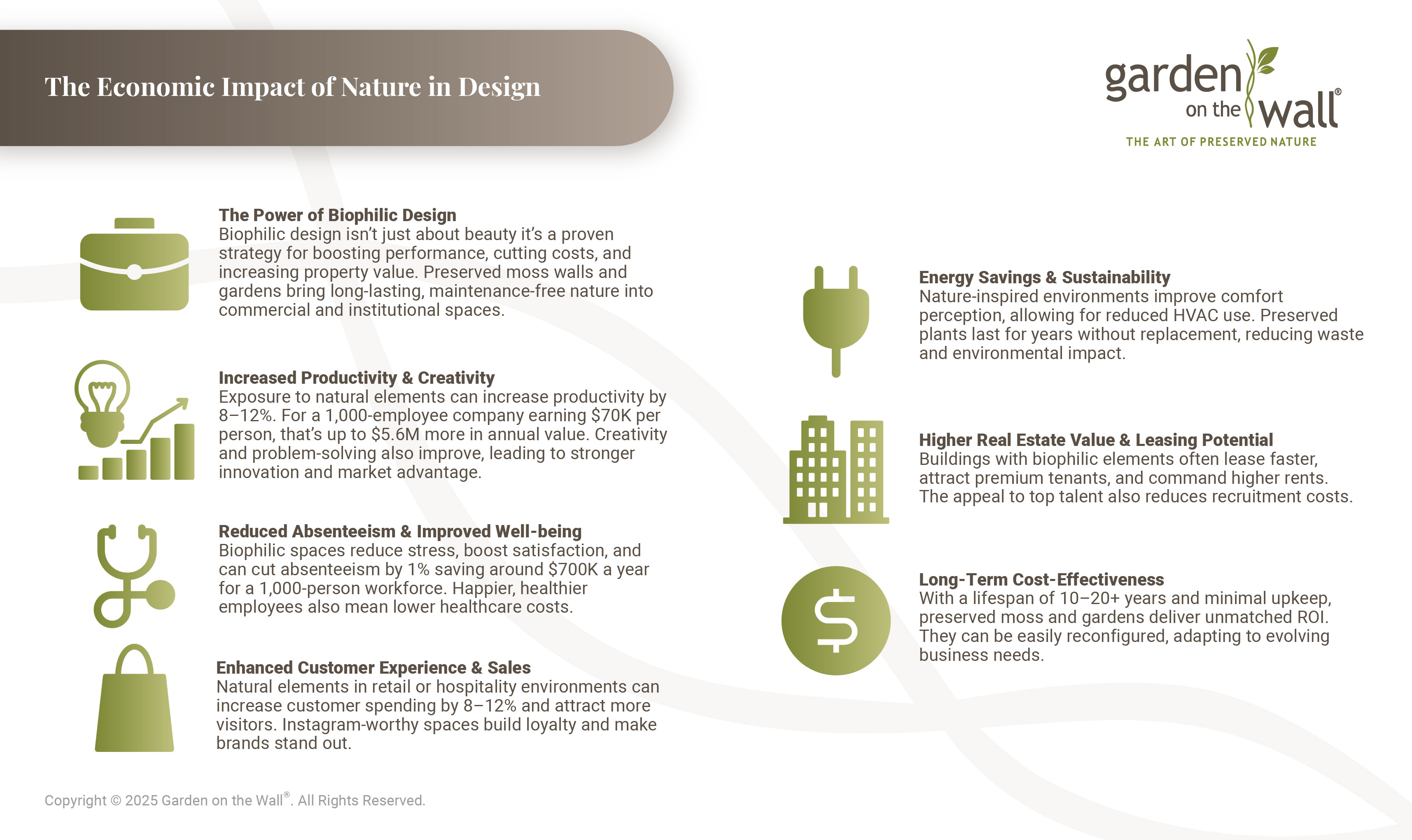Garden on the Wall®
The Economics of Biophilic Design: ROI and Long-Term Benefits

Understanding the Economic Impact of Nature in Design
Biophilic design, which incorporates natural elements into built environments, is often perceived as a luxury rather than a necessity. However, a growing body of research reveals that the economic benefits of biophilic design, particularly using preserved gardens and moss walls, far out weigh the initial investment. By creating spaces that nurture our innate connection to nature, businesses and institutions can realize significant financial gains through improved employee productivity, reduced absenteeism, enhanced customer experiences, and increased property values.
The economic impact of biophilic design extends beyond immediate aesthetic improvements. It touches on various aspects of business performance, from human resource metrics to energy consumption and real estate value. As we delve into the economics of biophilic design, we'll explore how preserved nature elements offer a unique combination of biophilic benefits and cost-effectiveness, making them a smart choice for businesses looking to improve their bottom line while creating more humane and inspiring environments.
Increased Productivity and Creativity
One of the most significant economic benefits of biophilic design is its impact on productivity and creativity. Studies have shown that exposure to nature, even in preserved form, can boost productivity by 8-12%.For a company with 1,000 employees earning an average salary of $70,000, an 8%productivity increase could result in an additional $5.6 million in productive value annually. This substantial boost in output can be achieved through strategic placement of preserved moss walls, planter inserts and wall gardens in workspaces.
Moreover, the presence of natural elements has been linked to enhanced creativity and problem-solving skills. In industries where innovation is key, this can translate to improved product development, more efficient processes, and ultimately, a stronger market position. The use of preserved nature in biophilic design allows companies to harness these benefits without the ongoing maintenance costs associated with living plants, providing a sustainable solution for long-term productivity gains.
Reduced Absenteeism and Improved Well-being
Biophilic design elements, such as preserved gardens and moss walls, contribute significantly to employee well-being, leading to reduced absenteeism and associated costs. Research indicates that employees in environments with natural elements report higher job satisfaction and lower stress levels. If biophilic design reduces absenteeism by just 1% (the actual number is more than 1% indeed), a company of 1,000 employees could save approximately $700,000 per year in lost productivity and replacement costs.
Furthermore, the improved well-being fostered by biophilic environments can lead to reduced healthcare costs for both employees and employers. While preserved plants don't actively filter air like living plants, they contribute to a perceived improvement in air quality and overall environmental satisfaction. This perception can have real physiological benefits, potentially reducing stress-related illnesses and the associated healthcare expenses.

Related Posts

The Economics of High-Quality Moss Walls & Preserved Gardens: Understanding the Budget (Total Cost of Ownership) in Preserved Moss and Moss Wall Installations

Latest Corporate Real Estate Trends - How to Amenitize for Highest ROI


